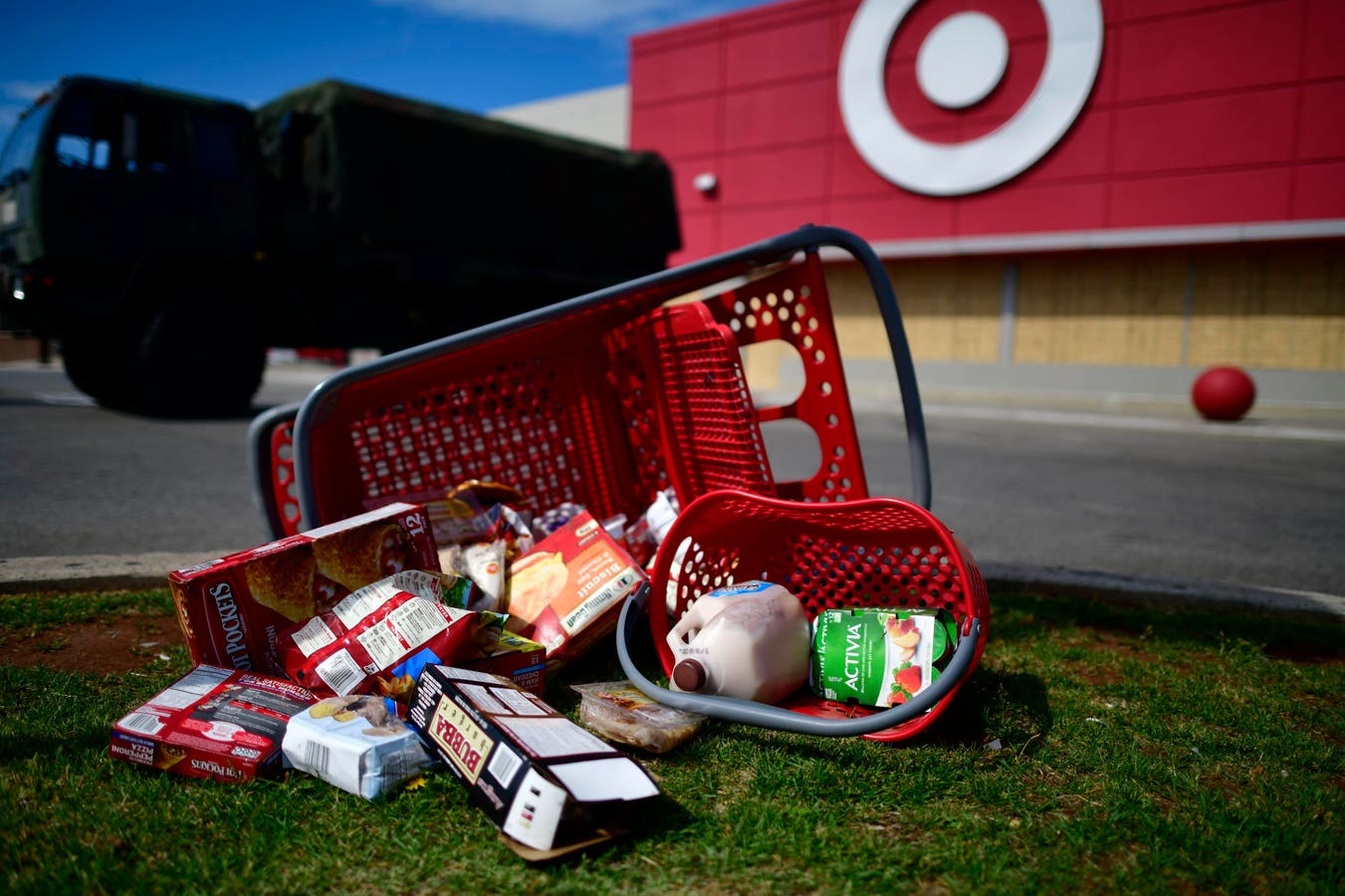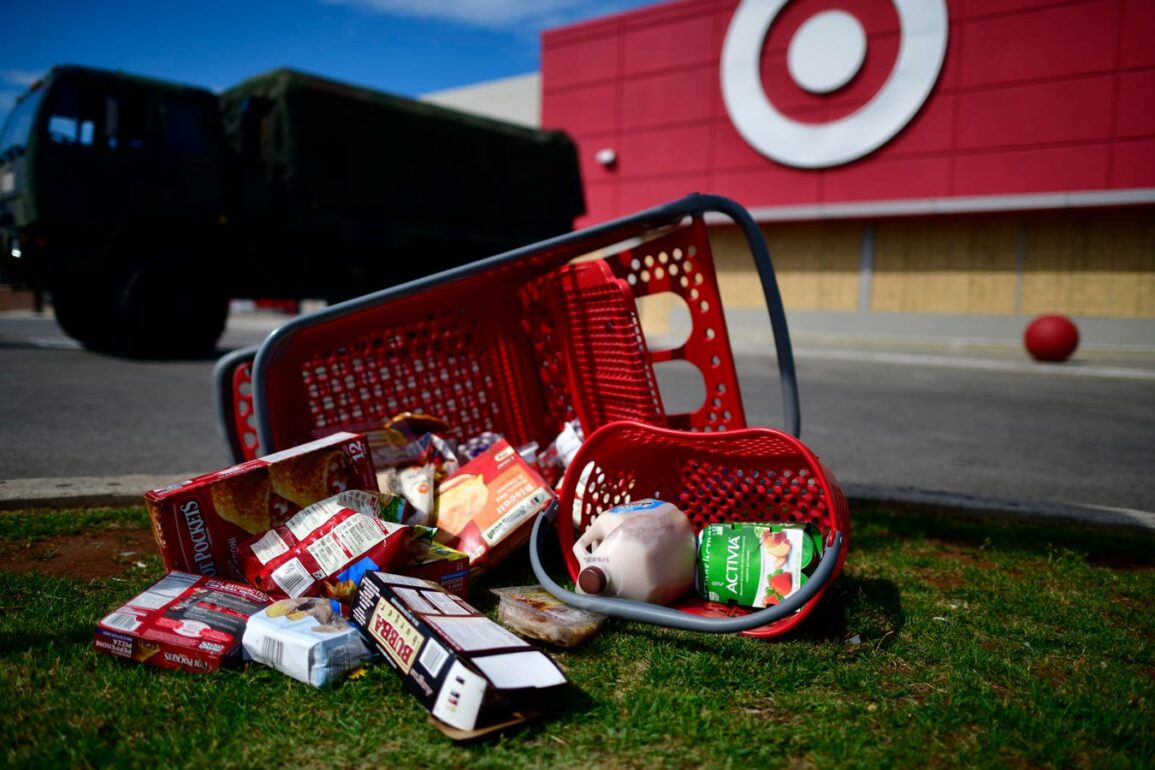
Retail crime tipped from a nagging problem to a full-blown national crisis on September 26, the last Tuesday of the month. Three unrelated events occurred that called everyone’s attention to the retail crime crisis.
The day started when the National Retail Federation released its latest report on the state of retail crime, and it was chilling. Not long after, Target announced the closing of nine stores because the increased incidence of organized retail crime with its accompanying threat of violence makes it unsafe to operate in those locations.
Later that evening, gangs took to the streets of Philadelphia to loot Apple, Lululemon, Foot Locker, Gamestop stores, among others in Center City and beyond. In addition, some 18 state-run wine and spirits stores were forced to close across the region.
It’s the proverbial “Rule of Three,” where events occurring in threes are more than a coincidence. Something significant and worthy of everyone’s attention has happened. That is, retail crime has reached epidemic proportions nationwide.
Despite multi-pronged efforts, retailers and law enforcement have been ineffective in preventing retail crime. Now, consumers, on whom the retail industry depends, are aware that they may be putting themselves in harm’s way when they shop. It’s a price much higher to the retail industry than the cost of their monetary losses
“I don’t know that the public or the media really understand that if somebody comes to your place of business and takes your stuff or worse, intimidates your people or customers, they’re all crime victims,” criminologist Read Hayes, Ph.D. at the University of Florida, shared with me.
Retail crime is far from a victimless crime committed against a faceless corporation that can absorb the losses. Real people are the victims. And increasingly, retail criminals are using terrorist tactics of aggression, intimidation, even violence to put anyone off who might interfere with their crime.
“Retailers are seeing unprecedented levels of theft coupled with rampant crime in their stores, and the situation is only becoming more dire,” said NRF’s David Johnston in the NRF report, as he called out increased violence and safety concerns as the number one priority for retailers, law enforcement and public policymakers to address.
Framing The Problem
Retail crime has been a persistent challenge, with the National Retail Federation conducting a National Retail Security Survey for over 30 years. But since the pandemic, it’s reached crisis proportions and become a threat not just to retailers’ performance but to their employees’ and customers’ safety.
Retail theft losses have more than doubled since 2019, reaching $112.1 billion in 2022 from $50.6 billion before the pandemic. And in the last year alone, the cost to retailers rose 19% from $94 billion in 2021.
Back in 2019, organized retail crime (ORC) was rated the number one threat, but retailers’ ORC threat assessment has exploded since then. Some 78% of the nearly 200 retailers surveyed representing 97,000 retail locations said ORC is more of a priority this year than last.
ORC is defined as theft or fraud committed by a criminal enterprise with the intent to convert illegally obtained merchandise for financial gain. It is distinguished from traditional “shoplifting,” which is typically small-scale theft committed by a single individual for personal use or consumption.
In other words, shoplifting is opportunistic, while ORC is planned and coordinated. But in both kinds of crime, retailers are seeing perpetrators becoming more aggressive and threatening.
Overall, 88% of retailers reported that shoplifters are more aggressive and violent now compared with a year ago, including 49% who said they have observed “much more” violent and aggressive behavior.
ORC is the shoplifting category associated with the highest threat of violence, with 67% reporting more violence and aggression among that class of retail criminals. And they are seeing more violent repeat offenders, with 53% reporting a moderate or substantial increase in the same aggressive people coming back for more.
Calling the current state of retail crime dire, NRF’s Johnston said, “Far beyond the financial impact of these crimes, the violence and concerns over safety continue to be the priority for all retailers, regardless of size or category.”
Virtually no category of retailer or type of goods is immune. People engaged in retail crime are equal opportunity thieves. They hit targets where the risk of being caught is low and they are becoming more aggressive to keep those who might interfere with their criminal acts off balance.
Inside The Criminal Mind
Fighting any kind of criminal activity, retail crime included, takes a combination of deterrence measures before the act and certain, swift sanctions afterward, assuming the perpetrator is caught. The rapid rise in retail crime suggests that retailers, law enforcement and the criminal justice system are falling down on all fronts.
People commit retail crimes because they sense it is unlikely that they will get caught. And even if caught, the potential sanctions or punishments don’t outweigh the potential rewards or benefits of committing the crime.
However, those engaged in organized retail crime operate differently from the run-of-the-mill shoplifter who may resort to it because of a lack of resources. Deterence and sanction measures that might discourage the individual shoplifter don’t necessarily work for organized retail criminals, who criminologist Hayes likens to terrorists and their acts as retail terrorism.
“The criminal offender is the one playing offense. The victim – the retailers – are playing defense,” he said. “It’s a complicated problem to predict this person or group are going to do this bad thing. Like fighting terrorism, it takes sophisticated intelligence to put all the pieces together.”
The Loss Prevention Research Council, with which Hayes is affiliated, developed a bowtie graphic to describe the retail crime prevention and control process with zones of influence extending from before, during and after the crime.
Zones of influence retail crime
At the center of the bowtie is the “bang” or the crime. Leading up to it, retailers must act to prepare, prevent and detect to mitigate a crime that may occur. Then afterwards, retailers need to go through a process of recovery, review and refine their actions and behaviors to lower the likelihood of future incidences.
“Most importantly, retailers must focus on what they’re doing and approach it in an integrated way, instead of just doing a bunch of stuff. It’s got to be much more focused,” he advised.
Ounce Of Prevention
Given the magnitude of the retail theft problem, one wonders if retailers are doing enough. In the NRF survey, the largest share of retailers (42%) are maintaining the same level of payroll devoted to loss prevention, though 34% have increased their loss prevention payroll and 45% have increased the use of third-party security personnel.
More than people power, a larger share of retailers (52%) are allocating additional funds toward technology solutions and 48% have increased budgets for additional loss-prevention and security equipment.
One technology that Hayes says is highly effective in preventing ORC attacks are mobile surveillance units, such as LiveView Technologies (LVT) provides. This technology monitors parking lots or activity happening on the street and uses AI algorithms to identify suspicious behavior that can proceed to a criminal act.
Such prominent surveillance units put potential criminals on notice that the retailer takes security seriously, so they might move on to a less attentive target. And if the AI-power security software detects potential bad actors congregating outside, it can trigger a blue flashing light warning or other message to drive them away.
“Our technology gives retailers the ability to be more proactive, whereas a lot of mitigation tactics put into place are more reactive,” said Matt Kelley, LVT’s
VT
Yet, retailers have been slow to catch on. Only 18% of retailers’ locations in the NRF survey have implemented mobile parking lot surveillance units, while some 10% are in the process of implementation and 19% are researching its use.
They should be working faster. “Part of the battle that retailers are facing is the bad actors are more well organized than the retailers themselves,” Kelley added.
Pound Of Cure
If preventative steps don’t work, retailers need law enforcement and the criminal justice system to apply appropriate sanctions. Retailers believe public policies are letting them down. Some 72% of the retailers surveyed reported an increase in the average value of a theft incidence where felony thresholds have been increased.
And initiatives to reduce or eliminate cash bail also emboldened retail criminals, with 67% of retailers reporting an increase in repeat offenders in locales where bail reforms have been enacted.
Regardless, prosecuting retail crime puts pressure on an already overburdened criminal justice system. ALTO US helps retailers work more closely with law enforcement and the legal system to make sure appropriate actions are taken.
“We close a gap that is clearly huge in the U.S. in this moment. We have fewer people in law enforcement and the prosecutors’ offices, all the while, crime is going up,” said Cristian Lopez, ALTO US CEO. “We help retailers put cases together so prosecutors have everything they need to prosecute and generate a consequence in those cases.”
ALTO aggregates all the necessary data about a theft event to be usable in the judicial process. Its services combine in-store customer success specialists, technology and attorneys on staff to compile all the data to develop cases for prosecutors.
“Some criminals make a living from their crime. They steal every single day. They need to see a strong consequence for their bad acts,” he said. On the other hand, ALTO’s process helps identify offenders with mental health or drug addiction issues so that the appropriate intervention treatments are prescribed.
“When you are able to actually generate the perception of a consequence – that a consequcne will really happen – you actually reduce crime,” he said and added that ALTO provides signage to alert potential criminals that the retailer has security measures in place.
Walgreens has been working with ALTO since 2019 in about 500 of its stores, where Walgreen’s vice president of asset protection services reports theft has been reduced by nearly 30%. Given that positive result, Walgreens recently announced it was widening its efforts across more than 2,250 stores nationwide.
More To Be Done
The NRF is leading the charge to address the retail crime crisis. It has designated Thursday, October 26 Fight Retail Crime Day, when it will host a fly-in for retail leaders to meet face-to-face with members of Congress and their staff to advocate for the Combatting Organized Retail Crime Act.
Passing this act will add an extra layer of protection to the INFORM Consumers Act passed last year, that was designed to keep illegally obtained goods from being sold on online marketplaces by requiring such marketplaces to verify the identities of high-volume third-party sellers.
The Combatting Organized Retail Crime Act would establish an Organized Retail Crime Coordination Center to facilitate information sharing and cross-agency investigations nationally and internationally by developing national-level ORC intelligence.
So far, the NRF reports 34 states have passed ORC legislation, but since many of these incidents cross state lines, nearly 90% of retailers believe a federal law is needed as well.
In advance of Fight Retail Crime Day, the NRF will also host a webinar Wednesday October 18 at 2 p.m. to inform retailers, public officials and other interested parties about its multi-pronged efforts to fight organized retail crime.
See also:
This post was originally published on this site be sure to check out more of their content.







